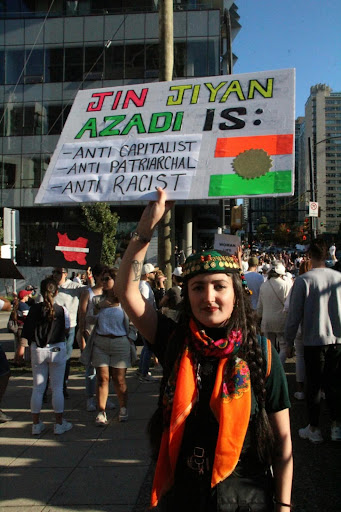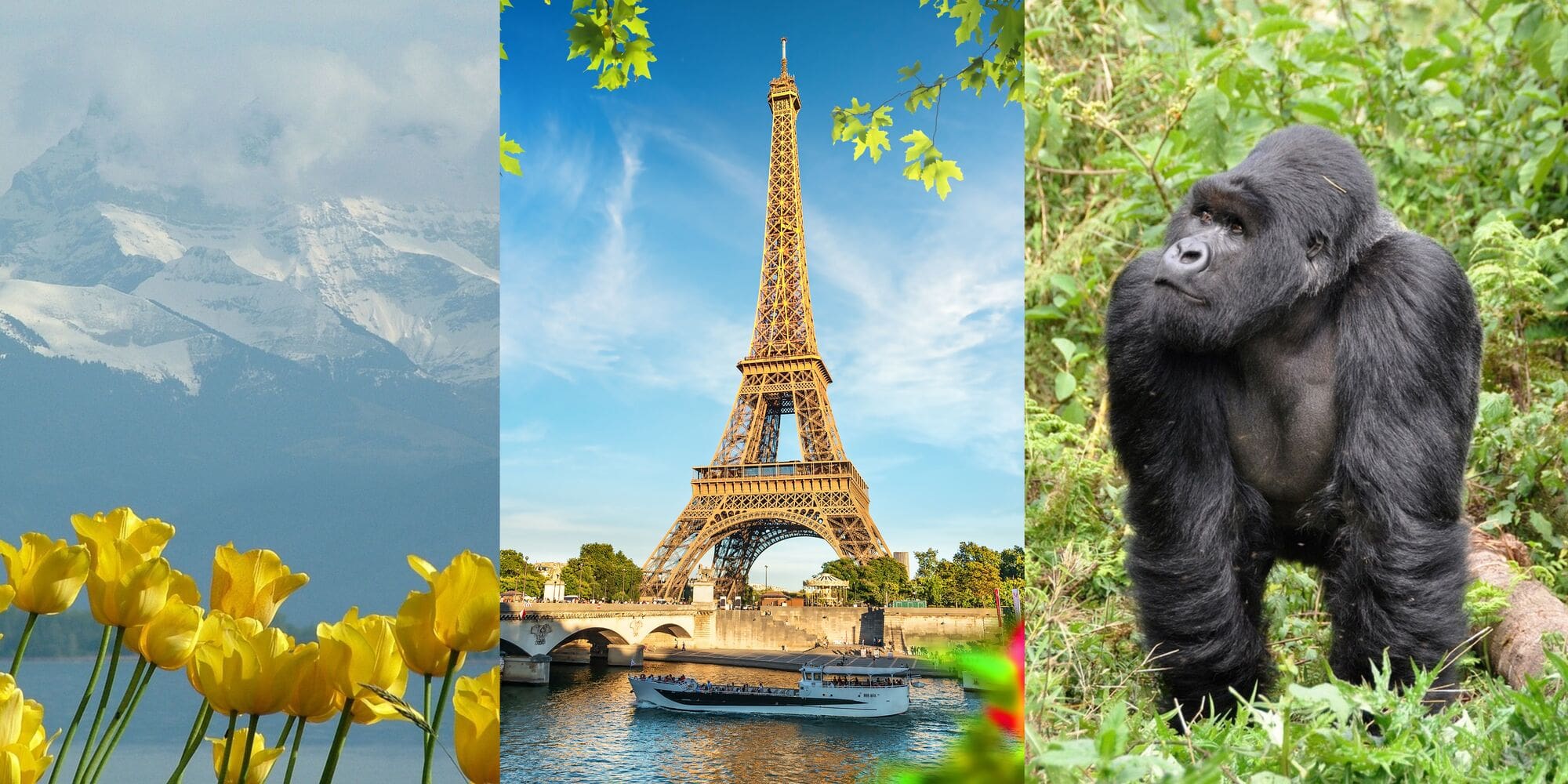
Courage In The Impossible: Gaza’s Poets Speak
Amidst Gaza’s turmoil, poets’ voices resonate. Explore Palestinian poetry’s power and resilience.



With the ongoing conflict between Israel and Hamas, many people are eager to show their support for Palestine. One popular way to do so is by wearing the keffiyeh or kufiyyah (كوفية), a cotton or wool fishnet-patterned scarf. It can have different color variations but is usually a white background with black or red embroidered details. But what is the meaning of the keffiyeh? Its exact origins are unknown, but many Arab countries, such as Egypt, Jordan, Syria and Saudi Arabia, have their own preferred way to wear it. In the Palestinian context, however, it’s not just a fashion item — it’s an iconic symbol of Palestinian culture and identity.

In the 1930s the keffiyeh was worn mostly by farmers and lower-class people from the villages, who used it as a headdress to protect themselves from the harsh weather conditions. This was seen as a symbol of social inferiority and backwardness by the upper class and townspeople, who wore a Tarbuush (طربوش; often called a “fez” in English from the Turkish fes): a rigid, red, conical hat. But during the Arab revolts against British forces, rebels started wearing the keffiyeh to conceal their identity and urged upper-class and townspeople to start wearing it too, so that the rebels could blend in when entering other cities. The British tried banning them, but this only encouraged Palestinians from all social backgrounds to start wearing the keffiyeh collectively as a form of resistance.
In the 1960s the Palestinian فِدائيّين (feda’iyiin; guerrilla fighters) resumed using the keffiyeh as an emblem of national struggle and unity, while the Palestinian politician Yasser Arafat popularized it to a broader, global audience. Its symbolism became even more fundamental when Israeli authorities banned the Palestinian flag in 1967, and throughout the ’60s and ’70s left wing students and activists from all over the world started wearing it as a symbol of sympathy towards anti-imperialist and anti-war causes.
It was at this point that it became a fashionable garment. Mass manufacturers started producing and selling it to broader audiences, who were often unaware of its meaning and wore it for aesthetic purposes (which has led to accusations of cultural appropriation). For Palestinians, however, the cultural significance of the keffiyeh remains strong despite its commercialization.
The patterns on the keffiyeh have many different meanings and interpretations: the fishnet pattern can represent the Palestinians’ connection to the sea, while the bold lines may represent the trade routes which made Palestine an exchange hub in ancient history. (Others believe the lines represent the walls that surround the land.) The oval stitches along the borders represent olive tree leaves: olive trees are of great cultural significance to Palestinians. They play a vital role in the Palestinian economy through oil and wood production, but the olive tree is also a representation of Palestinians’ resilience and attachment to their land. It’s important to note that the keffiyeh doesn’t have a religious meaning and that people wear it regardless of their religious beliefs, social backgrounds, age or gender.
The keffiyeh’s patterns are a classic example of Palestinian embroidery. The Arabic word for embroidery of any kind is تطريز (taTriiz), but in English the word “tatreez” has become synonymous with the unique style of embroidery indigenous to Palestine, traditionally done by women.

Just like the keffiyeh, tatreez has humble origins. Village women used to gather to decorate clothes, scarves and other textiles and pass down this art form to the younger generation. In general, geometric forms and subjects from nature are the most common motifs, but most of them reflect ordinary items from rural women’s daily lives, such as food (apples and chick-peas), animals (cow’s eyes and scorpions) and implements (mill wheels and ladders). Other motifs symbolized basic elements in nature like the sun, moon, stars, trees, mountains and water.
The colors used in the embroidery were just as important as the design, and color schemes were chosen in reflection of a woman’s feelings and stage in life. For example, in the Hebron region, purple threads were preferred by older women, while girls opted for red and green. In some Bedouin tribes, blue embroidery was meant for unmarried women, while married women used red to represent their status as wives. Older women or widows who were interested in remarrying combined the color blue with red flowers and sometimes intertwined figures of children with blue embroidery on the back panel of their dresses. However, red also symbolized happiness and life more generally and so could be used in almost all Palestinian embroidery, alongside other bright colors for accentuation. The dyes came either from Greater Syria or, later on, from Europe.
Some patterns and colors were originally only used in certain areas of Palestine (palm trees from Ramallah, or orange blossoms from Beit Dajan), whereas other designs were stitched everywhere in the country. After the 1920s, however, transportation improved and differences between regions started to decline.

Following the forced mass displacement of Palestinians into refugee camps post-1948, regional differences disappeared altogether. From the 1950s onward, practicality became essential in clothing, which featured plain decorations, but Palestinian women realized that they could make an income through their embroidery work. In the aftermath of the 1967 war and Israel’s occupation of the West Bank and Gaza Strip, display of the Palestinian flag was forbidden, but that didn’t stop women from stitching red, green, white and black designs into their embroidery. The words انتفاضة (intifada, “uprising”) and فلسطين (“Palestine”) were skillfully integrated into cushion patterns, serving as symbols of passive resistance and expressing Palestinian nationalist pride.
As a final note, tatreez today remains a powerful vehicle of self-expression in the face of generational trauma, and some artists are taking its imagery into the digital domain. Click on the image to the right to see an animated explanation of one Palestinian artist’s digital embroidery at the end of the first month of the Israel-Hamas war.

To learn more about Palestinian culture, consider learning Arabic with one of our Palestinian language partners! Here at NaTakallam, every language session contributes to the livelihoods of our skilled tutors from refugee/displaced backgrounds and their host communities. Book a session today, or start with a few key phrases: learn the meaning of inshallah, some common terms of endearment, or how to wish someone happy holidays.
ABOUT THE AUTHOR: Alice Zanini is a copywriting intern at NaTakallam. She is currently pursuing her bachelor’s degree in linguistics and Middle Eastern studies. Her research focus is on sociopolitical and sociolinguistic issues in modern Turkey and the Persian-speaking world.
ABOUT THE EDITOR: Mikaela Bell is a freelance editor and content writer with a background in anthropology and linguistics. An American based in France, she is also fond of reading, cooking, studying languages, fibercrafts and Irish stepdance.
Reimagine your language journey with NaTakallam.
Try a session in Arabic, Armenian, English, French, Kurdish, Persian or Spanish.
Languages open doors and minds. Discover new worlds.
Learn Arabic, Armenian, English, French, Kurdish, Persian or Spanish.
Deep dive into a language, packed with culture. Personalized to you.
Choose from Arabic, Armenian, English, French, Kurdish, Persian or Spanish.
Deep dive into a language, packed with culture. Personalized to you.
Choose from Arabic, Armenian, English, French, Kurdish, Persian or Spanish.
You might also LiKe

Amidst Gaza’s turmoil, poets’ voices resonate. Explore Palestinian poetry’s power and resilience.

Since the start of the ongoing Mahsa Amini Protests, we’ve heard the slogan “Woman, Life, Freedom” travel around the world. In Persian this is “zan, zendegî, âzâdî” (زن, زندگی, آزادی), but the slogan originates in the Kurdish language and the Kurdish struggle for autonomy.

A smattering of French slang from around the world! Learn more expressions like this with NaTakallam’s native speaking tutors.

Spanish is one of the fastest growing foreign languages in the world. Get access to the Spanish business world with our native tutors – tailored to your needs.
Improve your proficiency in Farsi or Dari & contextualize your learning with cultural insights from our native tutors. Language & culture go hand-in-hand at NaTakallam.
Looking to do business with Kurdish businesses? Learn with NaTakallam’s native speakers & reach new language (& business) goals – tailored to your professional needs.
Gain an edge with contextualized French learning by native tutors from displaced backgrounds. Flexible, with cultural & business insights, tailored to your needs.
Choose from Eastern Armenian or Western Armenian. Get quality teaching & unique insights from native tutors. Gain an edge with Armenian language skills.
Offer your team a smoother integration or transition with our customized English lessons delivered by bilingual tutors with extensive English instruction experience.
Choose from Modern Standard Arabic or any of our 7+ dialects offered by native tutors across the region. Take your proficiency to the next level & connect with the Arab business world.